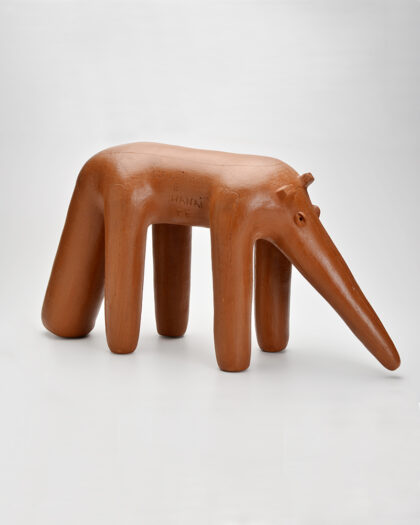Maria do Carmo dos Santos, better known as Neguinha, put her hands in clay when she was a little girl. Her first creations were the traditional clay pots, widely used at the time for cooking. Neguinha was born and raised in Belo Jardim, in the Agreste region of Pernambuco, where she still lives with her family today. “I started when I was seven years old. I worked with tiny pieces that were made for children to play with. When I was ten years old, I started to make big pots”.
At the beginning of her career, she discredited the power of her work, as she thought the municipality where she lived was too “stationary” for the time. Neguinha says that she sold 100 clay pots for just R$40, and with that her profit was very low. However, just like the master Cida Lima, she also experienced several changes in her work after meeting the artist Ana Veloso, who at the time coordinated the Estado de Arte project, by the Secretariat of Culture of Belo Jardim, which focused on revitalizing production. handicraft in the municipality and stimulate the potential of local artisans.
Maria do Carmo dos Santos, is Mestra Neguinha, after the traditional pots came anteaters, Cabeças, São Francisco, Frei Damião, platters, chickens, a lot of things. “We started to get inspired, we started to do it and, thank God, it’s working”. Indigenous heritage, caboclo dishes do not use a lathe. The mold is given by hands that know the texture and plasticity of clay and know how to guide it according to the wishes of the imagination. After drying in the shade, they are taken to the oven where they remain for about three hours. The drawings are made with chicken feathers and the colors come from tauá clay.

